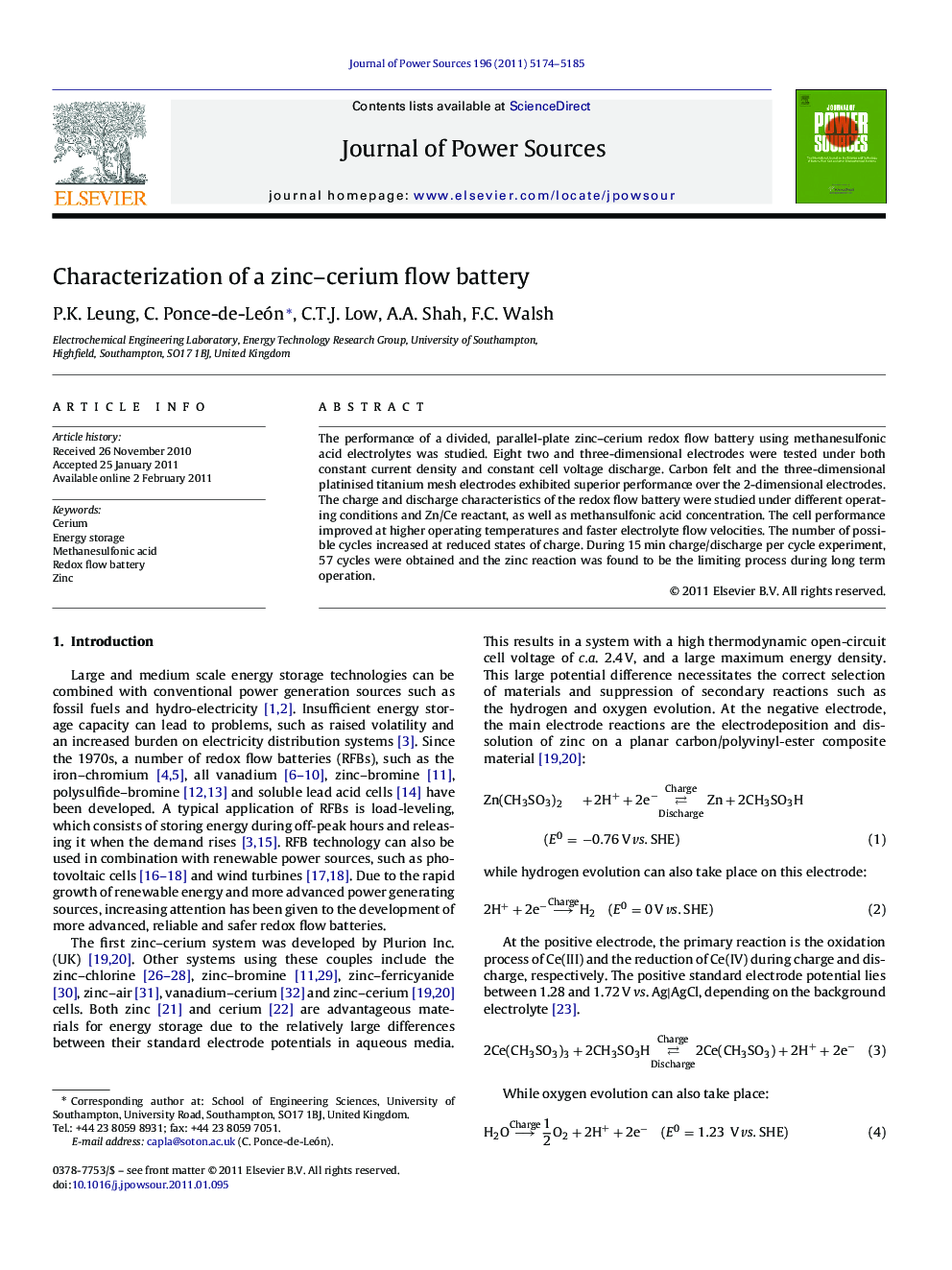| Article ID | Journal | Published Year | Pages | File Type |
|---|---|---|---|---|
| 1284793 | Journal of Power Sources | 2011 | 12 Pages |
The performance of a divided, parallel-plate zinc–cerium redox flow battery using methanesulfonic acid electrolytes was studied. Eight two and three-dimensional electrodes were tested under both constant current density and constant cell voltage discharge. Carbon felt and the three-dimensional platinised titanium mesh electrodes exhibited superior performance over the 2-dimensional electrodes. The charge and discharge characteristics of the redox flow battery were studied under different operating conditions and Zn/Ce reactant, as well as methansulfonic acid concentration. The cell performance improved at higher operating temperatures and faster electrolyte flow velocities. The number of possible cycles increased at reduced states of charge. During 15 min charge/discharge per cycle experiment, 57 cycles were obtained and the zinc reaction was found to be the limiting process during long term operation.
Research highlights► The performance of a cerium–zinc redox flow battery in methanesulfonic acid was evaluated under: ► different electrode materials, electrolyte compositions and life-cycle testing. ► Carbon felt electrodes show the highest coulombic and voltage efficiencies. ► The performance improved at high operating temperatures and a faster electrolyte flow velocities.
